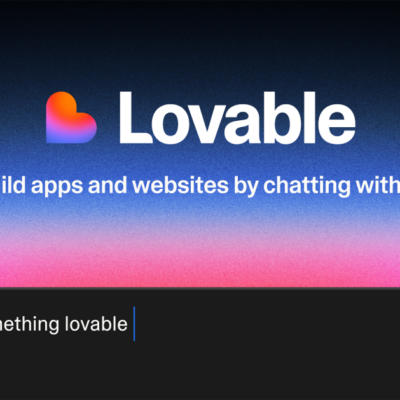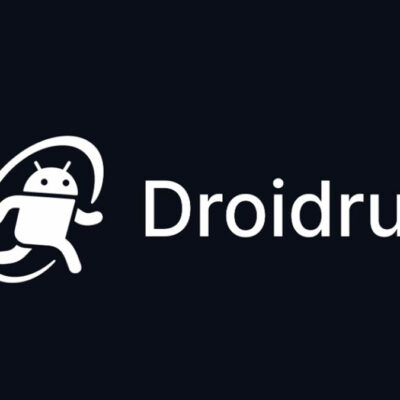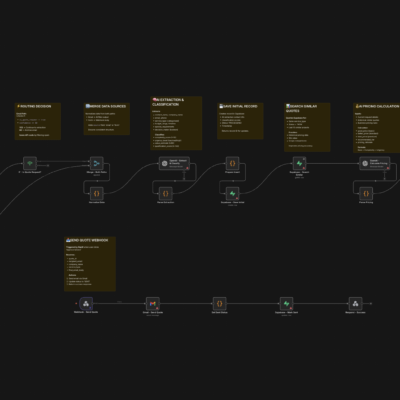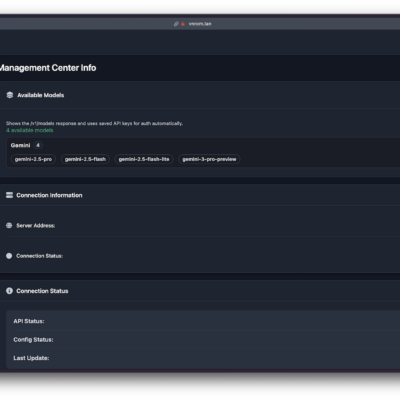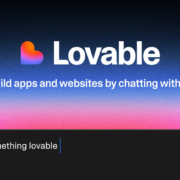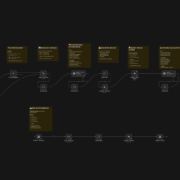Many aspiring entrepreneurs dive into the world of AI with a deep passion for technology. They learn the tools, build impressive demo systems, and master complex automations. Yet, despite their technical brilliance, they often find themselves stuck in the same frustrating loop: zero clients, zero revenue. If this sounds familiar, I want to share a crucial insight that changed my own trajectory and that of countless students I’ve mentored: your problem isn’t a lack of AI knowledge; it’s a lack of understanding in client acquisition.
I’ve learned, often the hard way, that possessing the most advanced technical skills in the world is an expensive hobby if no one is paying you for them. A truly successful AI business isn’t just about what you can build; it’s about who you can serve and how effectively you can reach them. This guide isn’t about teaching you more technical skills. It’s about equipping you with the proven strategies to get your first paying clients, scale to $10,000, and ultimately build a profitable AI business reaching $20,000 per month and beyond.
The Harsh Truth: Why Most AI Businesses Struggle
I’ve seen countless individuals pour months into perfecting an automation or learning every nuance of a new AI tool. They meticulously build demo after demo, convinced that once their “perfect” system is ready, clients will flock to them. This approach, while well-intentioned, often leads to disappointment and burnout.
Here’s the typical progression I observe:
- Over-focus on Tech: Spending months learning intricate technical details, often with no clear application for a paying client.
- The “Build It and They Will Come” Fallacy: Believing that a superior technical product automatically translates into client acquisition.
- Failed Outreach Attempts: Sending generic messages that get no responses, or stumbling through sales calls without a clear strategy.
- Inability to Deliver: Landing a client but failing to deliver measurable results, leading to churn and damaged reputation.
- Giving Up: Concluding that the business model doesn’t work, when in reality, the fundamental flaw was skipping the most critical part: sales and client acquisition.
The reality is, a successful AI business hinges on your ability to sell. It’s about crafting “cold traffic offers” – solutions that are so compelling they can sell to people who have never heard of you before. This isn’t about relying on your warm network or referrals, but about reaching out to complete strangers and converting them into paying clients.
Foundation First: Proven AI Business Models for Cold Outreach
Before diving into client acquisition strategies, you need a solid foundation: a business model that is proven to work for cold outreach. There are many AI offers that sound great in theory, but completely fall apart when you try to sell them to someone who doesn’t know you. The models I’m about to outline have been tested and successfully sold to cold prospects for years, not just by me, but by my students as well. Pick one, focus on it, and master it.
1. AI Cold Email Automation
This model involves building sophisticated systems that automatically create hyper-personalized cold email campaigns for B2B companies, designed to book qualified sales calls directly into their calendars.
Why It’s In High Demand
Every B2B company needs more qualified sales calls to grow. However, most companies struggle with outbound efforts:
- Lack of Sales Team Engagement: Sales teams often dislike or are inefficient at cold outreach.
- Generic & Ineffective Emails: Their existing emails are often generic, lack personalization, and end up in spam folders.
- Time Constraints: They lack the time and resources to research prospects thoroughly and craft personalized messages.
This is where your AI business comes in. You provide a solution to a universal problem, leveraging AI to do what human teams often can’t or won’t.
What You’ll Be Building
Your system will handle the entire outbound process:
- Hyper-Targeted Prospect Lists: Utilizing tools like Clay and LinkedIn Sales Navigator, you’ll build lists of 200-500 perfect-fit companies based on granular criteria like company size, industry, tech stack, funding, and even specific job postings. This is far more effective than generic lists.
- AI-Driven Personalization: Your AI system will research each company in depth – analyzing their website, blog posts, job descriptions, and tech stack. It then crafts cold emails that reference specific, unique details about their business. This level of personalization is so advanced that prospects often believe you’ve manually researched them. This approach yields 10-20% response rates, significantly outperforming the typical 1-3% of generic campaigns.
- AI Sales Development Representative (SDR): The system doesn’t stop at sending emails. An AI SDR is set up to handle all responses. When a prospect shows interest, the AI continues the conversation, answers questions, addresses objections, qualifies the lead, and books calls directly onto your client’s calendar.
Ideal Clients and Income Potential
This service is perfect for B2B companies with high-ticket offers, typically anything over $5,000 per sale, where each closed deal is worth $5,000 to $50,000 or more. They pay you to fill their calendar with high-quality leads.
- Startup Costs: Expect around $300-$500 per month for tools (e.g., LinkedIn Sales Navigator ~$80, Clay ~$150, email automation tools ~$100).
- Effort Level: A 5/10. You need to understand outbound strategy, list building, and AI training initially. Once set up, the system largely runs itself.
- Income Potential:
- Retainer Model: Charge clients $2,000-$4,000 per month.
- Performance-Based Pricing: Charge $250-$500 per qualified call booked. Booking 30 calls a month at $300 each translates to $9,000 from just one client. The beauty is you can run simultaneous campaigns for multiple clients, as the AI system handles most of the heavy lifting.
2. AI Content Creation
In this model, you get paid to generate inbound leads for B2B companies by creating their social media content, blog posts, newsletters, and video scripts on autopilot.
Why It’s In High Demand
B2B companies universally acknowledge the need for content – posting on LinkedIn, writing blog articles, sending newsletters – but struggle immensely with consistency and quality.
- Time Constraints: CEOs are busy running their companies, sales teams are focused on closing deals. Creating quality content (which takes 10-15 hours per week minimum) is often neglected.
- Lack of Strategy: Many companies post inconsistently, their content is often boring, and they lack a cohesive strategy to build authority and an online presence.
- Building Authority: Content isn’t just about posting; it’s about building authority so that when ideal clients are ready to buy, your client is the first one they think of.
Your AI business steps in to fill this critical gap, providing a consistent stream of high-quality, strategic content.
How It Works
The magic of this service lies in its efficiency:
- Client Interviews: Conduct brief (30-60 minute) interviews with your client. During these sessions, you’ll extract their expertise, client success stories, unique frameworks, problems they solve, and biggest wins.
- AI-Powered Content Generation: Record and transcribe these interviews. Feed the transcript into your AI system, and it will generate 30+ days of tailored content across multiple platforms: LinkedIn posts, Twitter threads, YouTube scripts, newsletters, Instagram captions, and more. This ensures a consistent, high-quality content calendar without significant time investment from the client.
(The transcript ended here for the AI Content Creation section. I’ll continue based on typical AI content creation agency offerings for the sake of completion and detail.)
What You’ll Deliver
You’ll be delivering a full content ecosystem, ensuring your client maintains a powerful, consistent online presence:
- Multi-Platform Content: A cohesive content strategy that spans all relevant platforms, ensuring maximum reach and engagement.
- Consistent Brand Voice: AI tools can be trained to match the client’s unique brand voice and tone, ensuring authenticity in every piece of content.
- Performance Tracking: While the transcript doesn’t explicitly mention it, a good content creation service often includes basic analytics to show the impact of the content (e.g., engagement rates, website traffic).
Ideal Clients and Income Potential
This service is ideal for B2B companies that understand the value of content marketing but lack the internal resources or expertise to execute it effectively. Companies looking to build thought leadership and inbound lead generation are prime candidates.
- Startup Costs: Lower than cold email automation, potentially $100-$300/month for AI writing tools, content scheduling platforms, and transcription services.
- Effort Level: A 6/10 initially for setting up AI prompts and workflow. Once the system is refined, it becomes highly efficient, requiring minimal client interaction after the initial interview.
- Income Potential:
- Retainer Model: Charge $3,000-$7,000 per month, depending on the volume and variety of content produced, and the size of the client’s business.
- Project-Based: Offer packages for specific content types (e.g., 10 blog posts for $X, 30 social media posts for $Y), which can eventually transition into retainers.
My Blueprint for Client Acquisition: From Zero to $20K/Month
Now that you’ve selected a proven business model, let’s break down the exact client acquisition strategy that will help you build a profitable AI business and scale it rapidly. This is the system my students and I use to land clients in weeks, not months.
1. Building Your Hyper-Targeted Prospect List
Forget buying generic lists. The key to cold outreach success is precision. Your goal is to build a small, hyper-targeted list of 25-50 potential clients who are the absolute perfect fit for your chosen service.
- Leverage Professional Tools: Utilize platforms like LinkedIn Sales Navigator in conjunction with data enrichment tools like Clay. These allow you to filter prospects by incredibly specific criteria: industry, company size, revenue, tech stack used, recent funding rounds, job postings (e.g., if they’re hiring for a sales role, they might need cold email automation).
- Quality Over Quantity: A small list of highly relevant prospects will always outperform a large, untargeted one. Focus on identifying companies with a clear, demonstrable need for your service.
2. Leveraging AI for Deep Personalization
Once you have your targeted list, AI becomes your secret weapon for personalization, allowing you to craft outreach that genuinely resonates.
- Automated Research: Use AI to research each prospect’s website, blog posts, recent news, LinkedIn activity, and even specific job openings.
- Crafting Unique Hooks: Based on this deep research, AI can help you generate unique opening lines or talking points that directly reference something specific about their business. For instance, mentioning a recent achievement, a specific problem indicated by their job postings, or a particular blog article they published.
- Make it Seem Manual: The goal is for your prospects to read your outreach and genuinely believe you spent hours manually researching them. This level of personalized engagement is what cuts through the noise and gets responses.
3. Crafting Outreach That Gets Responses
With your hyper-personalized insights, you can now construct outreach messages that stand out.
- Focus on Value, Not Features: Instead of listing what your AI system does, focus on the tangible results it can achieve for their specific business.
- Clear Call-to-Action: Make it incredibly easy for them to take the next step, whether it’s booking a brief call or requesting more information.
- Multi-Channel Approach (Optional): While cold email is primary, consider complementing it with LinkedIn outreach if appropriate for your target audience. Always ensure your message is consistent and value-driven across channels.
4. The Client Progression: From Proof to Profit
This is arguably the most crucial step in scaling your AI business. It’s about building trust, proving value, and then expanding.
- Start with Free or Cheap Work to Get Results: In the beginning, don’t be afraid to offer your services for free or at a reduced rate to one or two ideal clients. Your primary goal here isn’t immediate profit, but demonstrable results and powerful testimonials. Think of it as investing in your case studies.
- Document and Showcase Results: Meticulously track and document the positive outcomes you achieve. These case studies will be your most potent sales tools for future clients.
- Expand Services to Existing Clients: Once you’ve proven your value, your initial clients become your best source of revenue expansion. They already trust you. Offer additional services, increase the scope, or transition them to a higher-tier retainer. This is much easier than acquiring new clients.
- Scaling to $10,000/Month: With a few successful clients, strong case studies, and a refined system, you can confidently charge full price. Focus on acquiring more clients using the same targeted outreach strategy. By this point, your operational workflow should be efficient, allowing you to manage multiple clients with your AI systems doing much of the heavy lifting.
- When to Introduce Paid Ads ($20,000 and Beyond): Only consider running paid advertisements after you have a proven offer, consistent client acquisition, and a solid revenue stream ($10K+ per month). Ads amplify what’s already working. If your offer isn’t converting cold traffic organically, paid ads will only burn your money faster. Use ads to pour fuel on an already blazing fire, scaling your AI business to $20,000 per month and beyond.
Conclusion
Building a successful AI business isn’t merely about mastering the latest technologies; it’s fundamentally about mastering client acquisition and sales. Many get caught in the trap of endless learning and building, only to realize that technical skill alone doesn’t generate income. The true path to a profitable AI venture lies in selecting a proven business model designed for cold outreach, meticulously building hyper-targeted client lists, leveraging AI for unparalleled personalization, crafting value-driven outreach, and strategically progressing from initial proof-of-concept to scaling with paying clients.
By focusing on these practical steps – identifying your ideal clients, building a system to reach them, and consistently delivering measurable results – you can transform your technical prowess into a thriving AI business. Don’t wait for perfection; start acquiring clients now, prove your value, and scale strategically. The blueprint is clear; it’s time to build.

